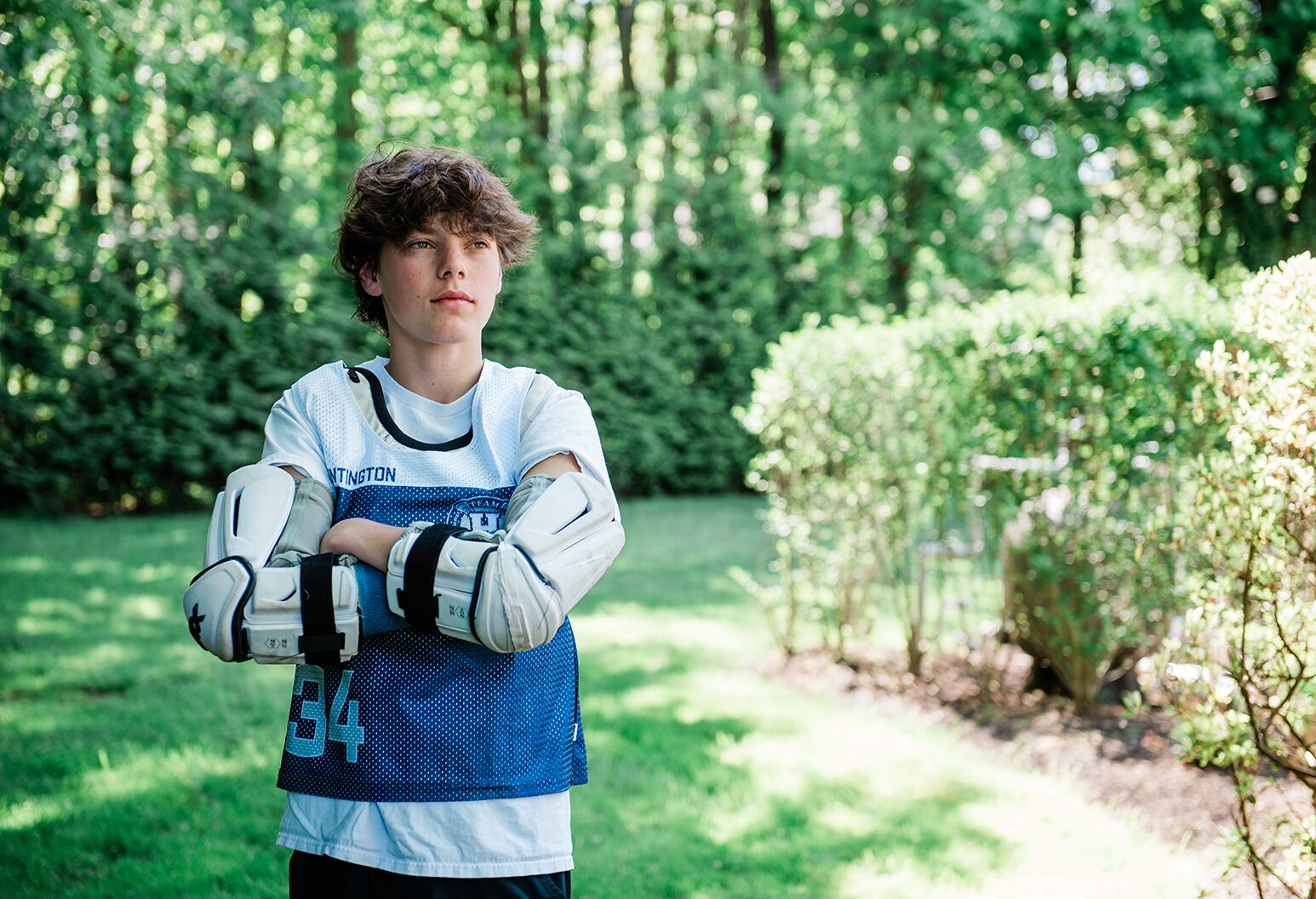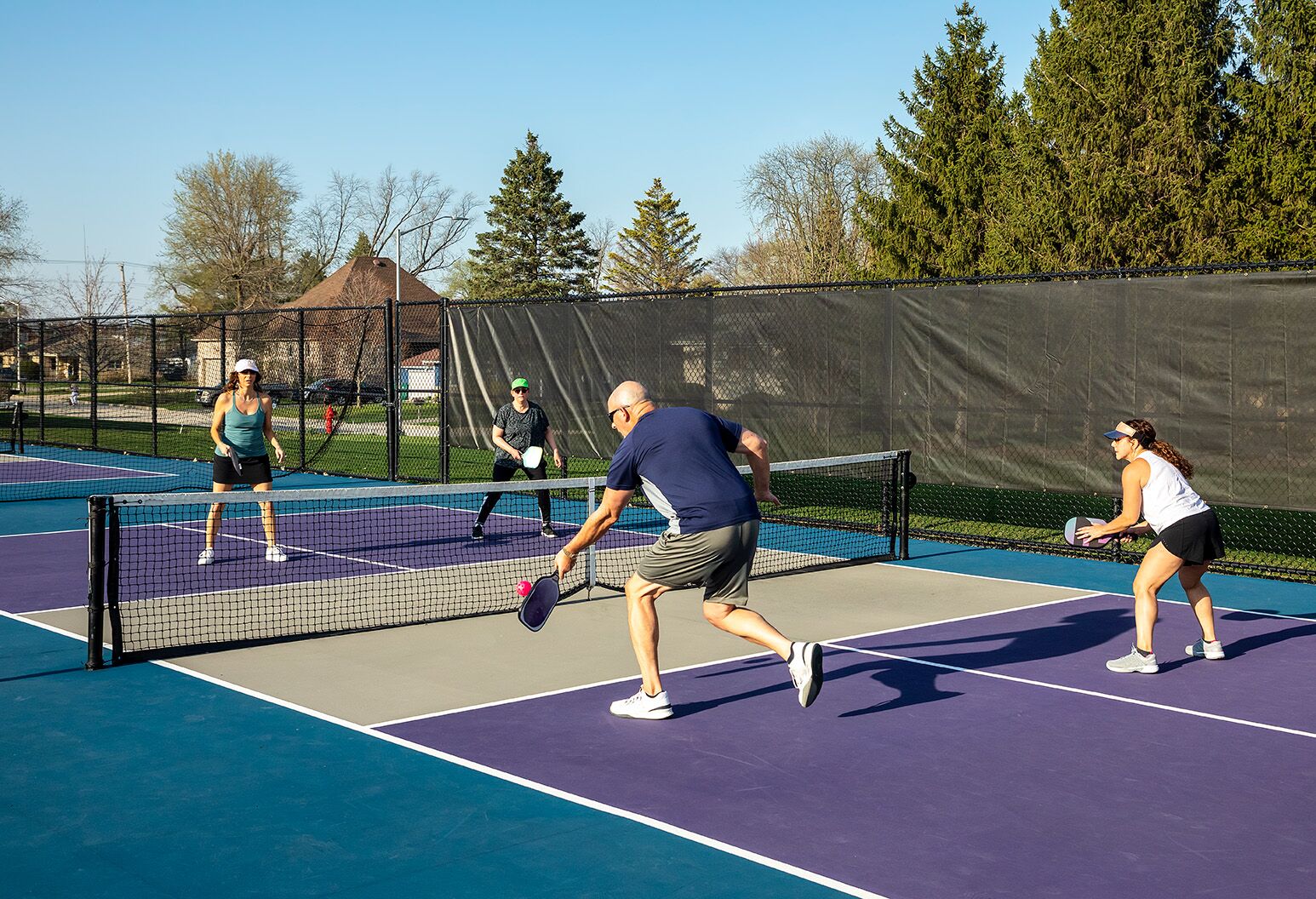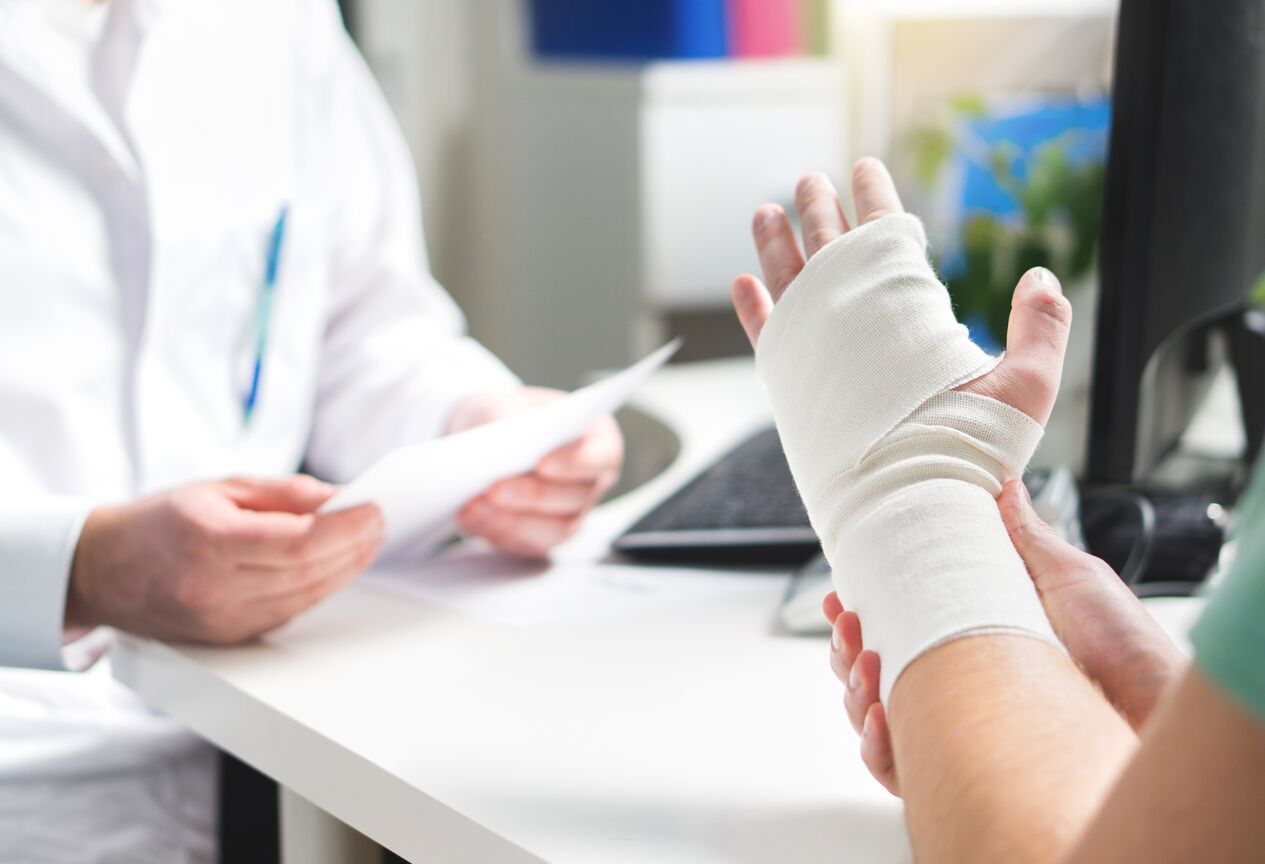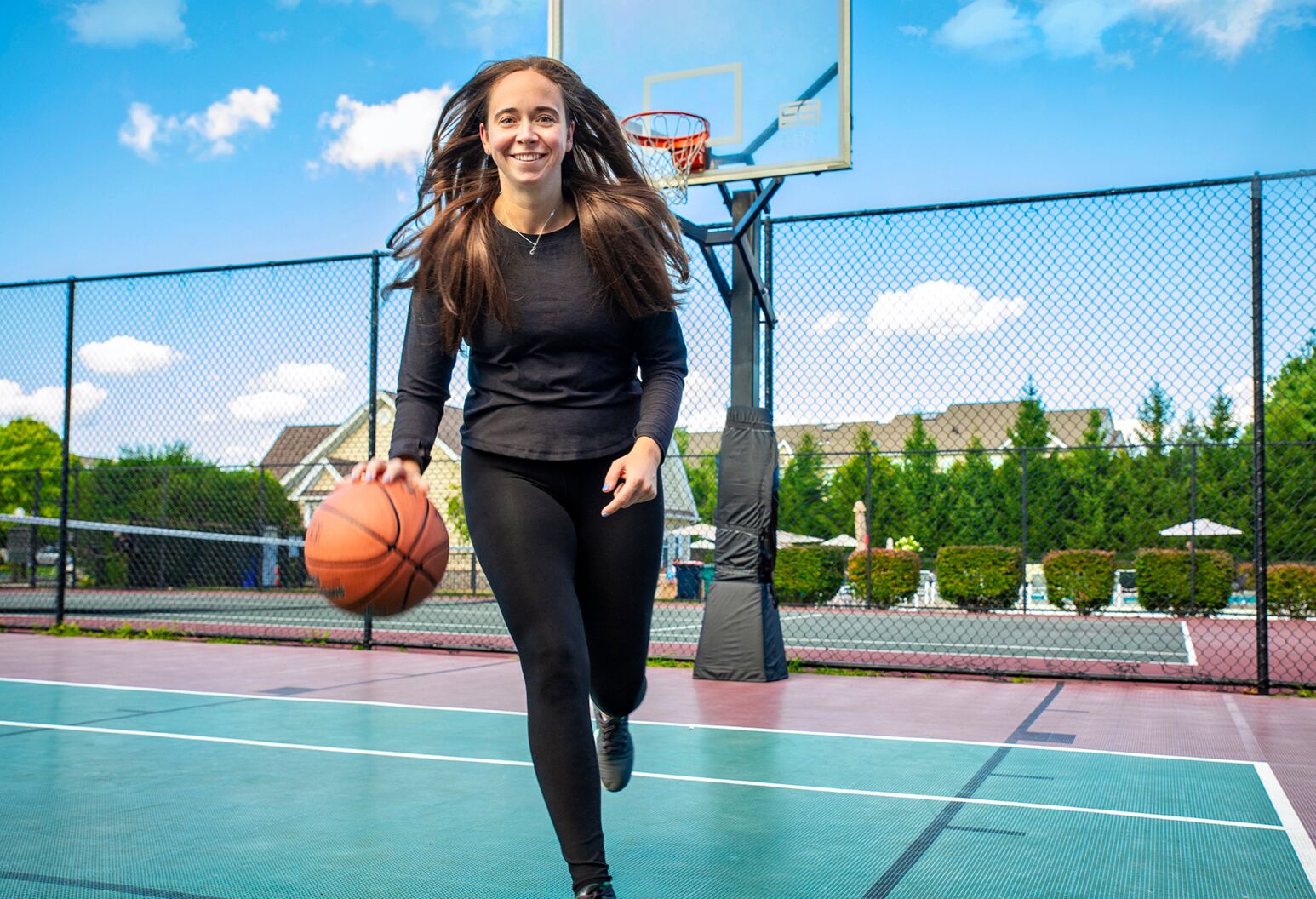Insights
Treating a torn labrum: Understanding your options
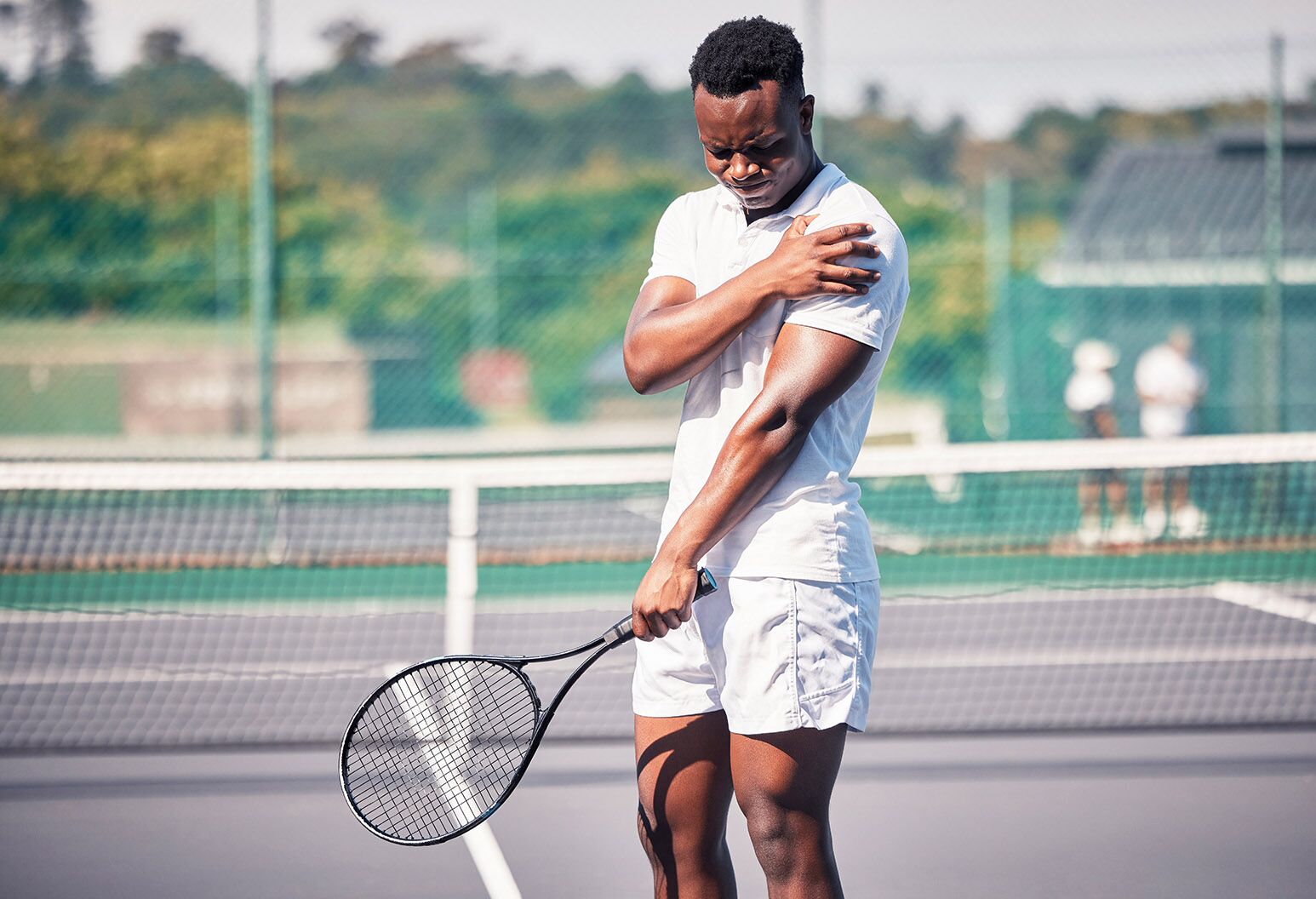
Experiencing hip or shoulder pain? It could be a torn labrum. Learn about treatment options and find the path to recovery that's right for you
If you’re a sports fan, you might have seen a favorite player land on the injured list with a torn labrum. While frequently seen in athletes, this orthopedic injury isn’t confined to the world of sports; it can sideline anyone, even those without a history of joint problems. If you find yourself with a tear of the shoulder or hip labrum, here’s what you should know about the treatments that can help you recover.
And the good news? Surgery isn’t your only option.
What is a labrum?
A labrum is a vital but often overlooked component of the shoulder and hip joints. It’s a ring of cartilage that surrounds and cushions a joint between bones. There are four labra in the body — one for each of your hip and shoulder joints. The labra absorb some of the impact of stress placed on these joints as you walk, jump, lift, push and perform other strenuous motions, reducing wear and tear.
“It also contains specialized nerve endings that provide feedback to the brain about the joint's position and movement,” says Nicholas Sgaglione, MD, Professor and Chair of the Department of Orthopedic Surgery and Senior Vice President and Executive Director of the Northwell Health Orthopaedic Institute. “This sense, known as proprioception, is crucial for coordinated movement and injury prevention. A torn labrum can disrupt these nerve signals as well as the joint mechanics, leading to feelings of instability or a ‘loose joint.’”
What is a torn labrum?
A torn labrum occurs when this cartilage ring is damaged or detached from the bone. This can happen due to a sudden injury, such as a fall or forceful impact, or it can develop gradually over time from repetitive motions. “Think about baseball or softball pitchers,” Dr. Sgaglione says. “The repetitive overhead motion of pitching puts significant stress on the shoulder joint, including the labrum; and they may not even notice it until a fall or an awkward landing on their shoulder.”
Likewise, a torn hip labrum is often seen in basketball players, hockey players, and runners, whose hips absorb thousands of high-speed impacts with the ground over the course of a game, season, or career. However, Dr. Sgaglione points out that, “Everyday activities like lifting heavy objects or reaching overhead can also cause a torn labrum, especially if the joint is already weakened or unstable.”
Arthritis — the wearing down of the joints — and other underlying joint conditions can also increase your risk of labral tears, especially as you age.
Symptoms of a torn labrum
Typically, a torn labrum comes with very noticeable symptoms.
Torn shoulder labrum symptoms
- Difficulty lifting your arm overhead
- Instability in the shoulder or catching
- Grinding, clicking or locking of the joint
“A torn shoulder labrum also increases your risk of a dislocated shoulder,” Dr. Sgaglione says. “This is because the labrum contributes to stability in the socket, so a tear makes your bones more likely to slip past one another.”
Torn hip labrum symptoms
- Stiffness or reduced range of motion
- Sharp, deep pain in hip, groin, or glutes during movement (can also disrupt sleep)
- Difficulty walking, running or crouching
- Pain in the region that makes sleep difficult
- Clicking, locking of joint
While both the shoulder and hip are ball-and-socket joints, the shoulder’s socket (known as the glenoid fossa of the scapula) is shallower. This gives it a wider range of motion — the shoulder is the most mobile joint in the body — but also makes it more prone to injuries, like a torn labrum.
Types of labrum tears
Like any injury, labral tears vary in type and severity. Tears can be partial or complete, meaning they go all the way through the labrum, and are categorized by their location and the structures involved.
Shoulder tears
- SLAP tears (superior labrum anterior and posterior): occur in the top part of the labrum, where the biceps tendon attaches.
- Bankart tears: occur in the front-bottom part of the labrum and are often associated with shoulder dislocations, as this area of the labrum helps stabilize the joint.
- Posterior labral tears: occur in the back (posterior) part of the labrum and can be caused by repetitive backward motion of the shoulder or a traumatic injury. These are less common than SLAP or Bankart tears.
- Combined tears: It's possible to have a combination of different labral tears, such as a SLAP tear combined with a Bankart tear.
Hip tears
- Radial tears: extend outward from the center of the labrum, like spokes on a wheel.
- Longitudinal tears: run along the length of the labrum.
- Flap tears: A piece of the labrum is partially detached, creating a flap.
- Detachment tears: The labrum is completely detached from the bone.
Torn labrum diagnosis
Whether your trouble is in the hip or the shoulder, to diagnose a tear, your doctor will take a medical history, ask about symptoms and conduct a physical exam. “This may include moving your arm or leg around in a circular motion to check the joint for pain or limited range of motion,” Dr. Sgaglione explains.
From here, your doctor may order further diagnostic tests, including:
- X-ray — Labral tears can be associated with osteoarthritis, a painful inflammation in the joints that appears on X-rays as a narrowing of the space between bones. Finding osteoarthritis on an X-ray could hint at an underlying labral tear, although this doesn't always mean a tear is present.
- MRI — Unlike X-rays, MRIs can directly produce images of soft tissue. This allows radiologists to see your labral tear and assess its location and severity.
- Musculoskeletal ultrasound — Joint pain can also provide clues that point to labral tear. Guided by an ultrasound, doctor injects a painkiller into your joint. If this causes your pain to subside, the problem is likely something deep within your joint — such as a labral tear.
Non-surgical treatment for a torn labrum
The treatment for a torn labrum depends on several factors, including the location and severity of the tear (is it irritated or partially or completely torn), your symptoms, activity level and overall health. Conservative, non-surgical treatments are often the first line of defense.
Non-surgical treatment options focus on managing pain and improving joint function.
Physical therapy
A cornerstone of non-surgical treatment, physical therapy helps improve range of motion, strengthen supporting muscles and stabilize the joint. A physical therapist will develop a personalized exercise program tailored to your specific needs. Your program may include stretching and/or resistance training to improve range of motion and strength, respectively.
“Exercises should only be performed under the guidance of a physical therapist or other qualified health care professional to avoid injury,” Dr. Sgaglione advises.
An exercise routine might include:
- Sleeper stretch — improves range of motion in the shoulder
- Shoulder flexion exercise — strengthens the shoulder
- Hip abductor stretch — improves hip stability
- Hip adductor stretch — improves hip stability
- Hip flexor stretch — improves range of motion in the hip
Medications
Over-the-counter pain relievers like ibuprofen or naproxen can help manage pain. Your doctor may also prescribe stronger medications if needed.
Injections
In some cases, your doctor may recommend injections into the joint. Corticosteroids can help reduce inflammation and pain, while hyaluronic acid, a substance the body creates in the eyes and joints, can also modify joint symptoms. “Injections are not a long-term solution and are often used in conjunction with other treatments,” Dr. Sgaglione cautions.
In tandem with any treatment, Dr. Sgaglione says there are several steps patients can take on their own to manage pain and reduce symptoms.
- Rest and activity modification: Avoiding activities that aggravate your symptoms is crucial. This might involve temporarily limiting overhead movements (for shoulder tears) or high-impact activities (for hip tears).
- Ice and heat: Applying ice can help reduce pain and inflammation, while heat can relax muscles and improve blood flow.
Labrum surgery
While non-surgical treatments can be all a patient needs, labral tears don’t heal on their own; surgery is the only way to repair a labrum completely.
Torn labrum shoulder surgery
Shoulder labrum surgery is typically performed arthroscopically, meaning small incisions are made, and a tiny camera and instruments are inserted into the joint. This minimally invasive approach allows for faster recovery and less scarring compared to traditional open surgery. Common procedures include:
- Labral debridement: If the tear is small and stable, the surgeon may simply smooth or trim the frayed edges of the labrum.
- SLAP repair: Using shoulder arthroscopy (often called a “shoulder scope”), this minimally invasive technique repairs the area of the labrum that anchors the long head of the biceps tendon. In some cases, the biceps tendon attachment is moved to a new location and securely reattached to the bone; this procedure is called a tenodesis.
- Bankart repair: Bankart lesions occur in a dislocated shoulder, when the labrum tears at the front of the socket. The Bankart labral repair surgery reattaches the torn labrum to the shoulder socket rim.
- Posterior labral repair: This reattaches the area of the labrum that is located on the back portion of the shoulder joint.
Torn labrum hip surgery
When less invasive treatments are unable to correct the labral tear in your hip, surgeons will fix it in a procedure known as hip arthroscopy. Surgeons thread thin surgical instruments through an opening made in your skin to access the hip joint and make any necessary repairs.
Similar to the shoulder, if the tear is small and stable, the surgeon may just clean up the frayed edges using labral debridement. The most common approach, Dr. Sgaglione explains, is called a labral repair.
“In this procedure, we reattach the torn labrum to the bone using sutures or anchors,” he says.
If the labrum is severely damaged and can't be repaired, labral reconstruction may be a better option. Using tissue from another part of the patient’s body (or using a donor tissue), the surgeon can reconstruct the labrum. This is less common than repair.
Because hip labral tears often occur alongside other hip conditions, surgeons often address both issues in the same surgery. Examples include:
- Hip impingement: The surgeon will reshape the bone (osteoplasty) to correct the impingement, a condition that limits motion in the hips due to the presence of extra bone on either side of the joint.
- Ligamentum teres tears: This ligament, found deep within the hip joint, connects it to the top of the leg (femur). If it is also torn, it may be repaired or reconstructed during the same procedure.
- Cartilage damage: If the articular cartilage, found on the ends of bones, is damaged, the surgeon may perform procedures like microfracture or chondroplasty to address this.
Recovery from torn labrum surgery
Recovery after labrum surgery varies depending on the individual, the specific procedure and whether the surgery was on the hip or shoulder. After surgery, patients can expect to remain in the hospital for one to three nights. Physical therapy is recommended for several months to build up strength and mobility. In the meantime, you may be required to use a medical device to stabilize your joint while it heals.
- For shoulder surgery, you’ll wear an arm sling for four to six weeks
- For hip surgery, you’ll be on crutches for up to four weeks
In general, it can take six months to a year to recover. Full recovery and return to pre-injury activity levels can sometimes take even longer, especially for athletes in high-demand sports like baseball or volleyball.
“Don't rush your return to sports or strenuous activities,” Dr. Sgaglione cautioned. “Prematurely returning to high-impact activities can risk re-injury. Your care team can provide personalized guidance based on your specific situation and help you safely return to your desired activity level.”
